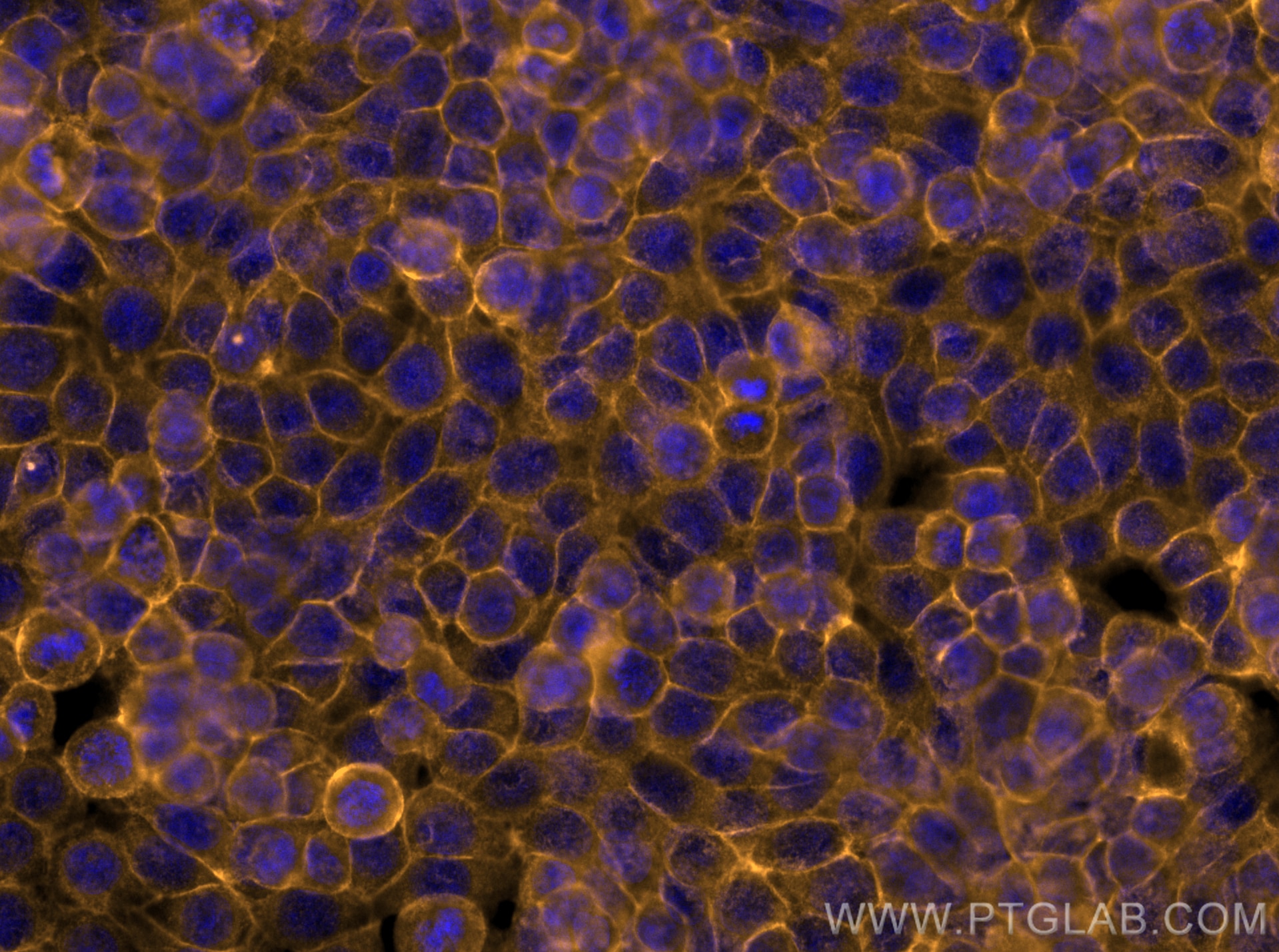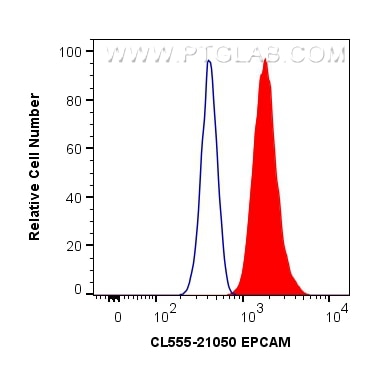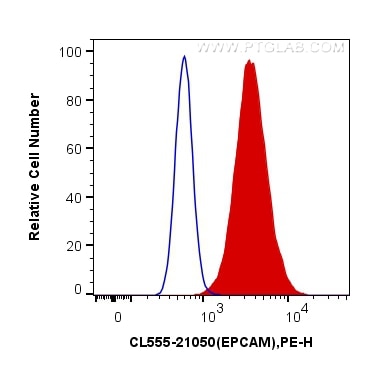- Phare
- Validé par KD/KO
Anticorps Polyclonal de lapin anti-EPCAM/CD326
EPCAM/CD326 Polyclonal Antibody for IF/ICC, FC
Hôte / Isotype
Lapin / IgG
Réactivité testée
Humain, souris
Applications
IF/ICC, FC
Conjugaison
CoraLite®555 Fluorescent Dye
N° de cat : CL555-21050
Synonymes
Galerie de données de validation
Applications testées
| Résultats positifs en IF/ICC | cellules HT-29, |
| Résultats positifs en cytométrie | cellules HT-29, cellules MCF-7 |
Dilution recommandée
| Application | Dilution |
|---|---|
| Immunofluorescence (IF)/ICC | IF/ICC : 1:50-1:500 |
| Flow Cytometry (FC) | FC : 0.40 ug per 10^6 cells in a 100 µl suspension |
| It is recommended that this reagent should be titrated in each testing system to obtain optimal results. | |
| Sample-dependent, check data in validation data gallery | |
Informations sur le produit
CL555-21050 cible EPCAM/CD326 dans les applications de IF/ICC, FC et montre une réactivité avec des échantillons Humain, souris
| Réactivité | Humain, souris |
| Hôte / Isotype | Lapin / IgG |
| Clonalité | Polyclonal |
| Type | Anticorps |
| Immunogène | EPCAM/CD326 Protéine recombinante Ag15393 |
| Nom complet | epithelial cell adhesion molecule |
| Masse moléculaire calculée | 314 aa, 35 kDa |
| Poids moléculaire observé | 35-40 kDa |
| Numéro d’acquisition GenBank | BC014785 |
| Symbole du gène | EPCAM |
| Identification du gène (NCBI) | 4072 |
| Conjugaison | CoraLite®555 Fluorescent Dye |
| Excitation/Emission maxima wavelengths | 557 nm / 570 nm |
| Forme | Liquide |
| Méthode de purification | Purification par affinité contre l'antigène |
| Tampon de stockage | PBS with 50% glycerol, 0.05% Proclin300, 0.5% BSA |
| Conditions de stockage | Stocker à -20 °C. Éviter toute exposition à la lumière. Stable pendant un an après l'expédition. L'aliquotage n'est pas nécessaire pour le stockage à -20oC Les 20ul contiennent 0,1% de BSA. |
Informations générales
Epithelial cell adhesion molecule (EpCAM, CD326) is a type I transmembrane glycoprotein that functions as a homophilic, epithelial-specific intercellular cell-adhesion molecule. In addition to cell adhesion, EpCAM is also involved in cellular signaling, cell migration, proliferation, and differentiation. EpCAM is highly expressed on most carcinomas and therefore of potential use as a diagnostic and prognostic marker for a variety of carcinomas, and has become a therapeutic target. EpCAM may occur in distinct forms due to glycosylation. (PMID: 20837599; 19249674; 21576002; 22647938; 12691820)
Protocole
| Product Specific Protocols | |
|---|---|
| IF protocol for CL555 EPCAM/CD326 antibody CL555-21050 | Download protocol |
| FC protocol for CL555 EPCAM/CD326 antibody CL555-21050 | Download protocol |
| Standard Protocols | |
|---|---|
| Click here to view our Standard Protocols |




